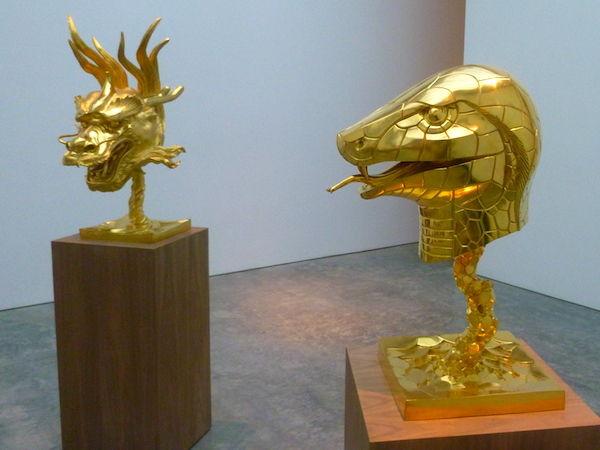
Photo: Benjamin Sutton.
The Profile: Christopher Tsai, a 39-year-old Manhattan investment firm president, is the world’s biggest Ai Weiwei collector. Though he no longer owns the house he commissioned the artist and activist to design for him in upstate New York, his Upper East Side apartment is full of Ai’s work. Forbes took a tour of the pad, coming across countless works by Ai—including his Zodiac Heads—as well as pieces by other Chinese contemporary artists including Huang Yong Ping and Chen Yu. “Weiwei has a number of serious collectors now—that’s a challenge,” Tsai says. “But I’m in an interesting position because the artist knows me personally, so we get offered great work before a lot of people and have the ability to choose from the best. They know I want to build a collection that is going to be meaningful to the history of art.”
The Opinion Piece: World Jewish Congress president Ronald Lauder takes to the Wall Street Journal to call on museums to return works in their collections that were looted by the Nazis to their rightful owners’ heirs, citing current cases involving the Norton Simon Museum and the University of Oklahoma as particularly problematic. “Too many art museums in the U.S. and Europe seem to have forgotten a simple rule: There should be no impediments to responsible behavior,” he writes. “Above all, we in the art community should not perpetuate the crime against humanity committed by Hitler when he stole Jewish art collections and murdered their owners.”
Alfredo Barsuglia, Social Pool (2014).
Photo: Courtesy the artist, MAK Center.
The Excursion: Artist Alfredo Barsuglia built a small swimming pool in the middle of the Mojave Desert, a project commissioned by Los Angeles’s MAK Center. To visit the work, titled, Social Pool, intrepid art lovers must first procure a key from MAK, at which point they will receive its GPS coordinates. The rest is up to them. “It’s really hard to find,” Barsuglia tells the Los Angeles Times. “There is no road. There is no fence. There is no sign. There is no trail. You just come on it. I’m sure some people won’t find it.”
The Review: With September’s Scottish referendum on independence from Great Britain looming, the Guardian‘s Jonathan Jones visits the country to take in the sprawling, multi-site survey “Generation: 25 Years of Contemporary Art in Scotland.” Jones finds the initiative outstanding, save for an unfortunate exhibition at the National Galleries of Scotland, noting a prevalence of artist-musicians emerging from the Glasgow scene, and falling hard for Douglas Gordon and Richard Wright. “Scotland is obviously an enjoyable place to be an artist,” Jones concludes. “You can play in three bands, teach at Glasgow School of Art and show your prints in a pub. Maybe that is, to quote the tattoo Ross Sinclair showed me on his back, ‘Real Life.'”
Woman’s Kimono with Abstract Design Japan, mid Shōwa period (1926-89), c. 1950.
Photo: © 2014 Museum Associates/LACMA.
The Eye Candy: On July 5 the exhibition “Kimono for a Modern Age,” which brings together colorful, practically avant-garde 20th-century examples of the traditional Japanese garment, opens at LACMA. The Wall Street Journal has a preview of the show, accompanied by a slideshow of some of the kaleidoscopic kimonos.
The Extracurricular: Welcome to The Villages, a retirement community in Florida that, with a population of 110,000—a number that has quadrupled since 2000—is the United States’ fastest growing metropolitan area. The entire community, which is the subject of a fascinating Bloomberg article, belongs to the Holding Company of the Villages Ltd., developer H. Gary Morse’s company, which has sold more than 50,000 homes and generated nearly $10 billion in revenue since 1986. “They own everything,” says Andrew D. Blechman, who wrote a book on retirement communities titled Leisureville: Adventures in America’s Retirement Utopias. “You basically have a city of 100,000 people, owned by a company.” No word on whether or not there’s an artist-in-residence program.